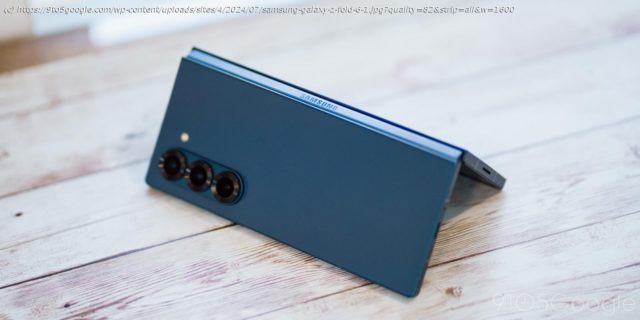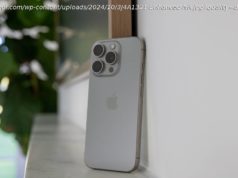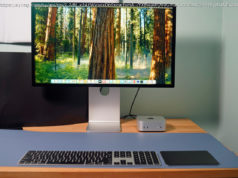Samsung’s new Galaxy Z Fold 6 is a perfectly fine foldable, but from the brand that started the whole category, is that still enough?
Samsung was the pioneer in the world of foldables, and the company’s Galaxy Z Fold series has marked the leader in the market ever since. But, after effectively perfecting its take on the form factor last year, Samsung has been forced by the pressure of competition to finally sit down and make some bigger changes. The Galaxy Z Fold 6, even in the broader landscape, meets all of the basic requirements of being a great foldable, but is that still enough?Considerably better hardware (until you look at the competition)
The hardware is easily the biggest change on the Galaxy Z Fold 6, so let’s start there.
With this generation, Samsung has finally addressed two of the biggest complaints about the Fold series – the thickness and the narrow outer display – by making some pretty small changes.
Starting with the outer display, it’s been made 3mm wider by thinning out the bezels and hinge and pushing the display right up to the edges. The phone itself is just 1mm wider than the Galaxy Z Fold 5. We’ll talk more about what it’s like to use that later, but the physical design here feels better than those numbers suggest. The hinge fades into the background while using the device, and the flat edges of the device help make the display feel a little bigger than it actually is.
Those flat edges are a distinct change in design, too, as previous Folds have had at least somewhat rounded edges on the metal. Combined with the matte finish, this feels great, at least in short bursts. If you’re using the device closed for an extended period of time the edges kind of dig into your hand a bit, but that’s something that will be solved with a case, something that virtually everyone buying this device will be doing anyway.
Meanwhile, the other big change is the thickness. This is Samsung’s thinnest foldable yet, measuring 12.1mm when closed. That’s down from 13.4mm on the Galaxy Z Fold 5. Even that is noticeable, but this will be an even bigger change for users upgrading from the Fold 3 or Fold 4, which were around 16mm at the point of their hinge. It’s a drastic improvement in that regard. From those older devices, too, the other key upgrades are that the hinge no longer has a gap (as solved on Fold 5), and the split between the two halves is easier to use. There’s a small section of black plastic which makes it much more comfortable to grip the two halves when opening up the device.
Samsung’s hinge also feels better than ever. It’s still as sturdy as ever when it comes to positioning the device at an angle, but Samsung has tweaked the formula to where the first few degrees almost spring open to make unfolding the device faster, while, the last few degrees also spring open just a little bit, but not aggressively as is the case with a lot of other foldables (particularly flip phones). On the whole, I think Samsung has really dialed in how the hinge is supposed to feel, and the best word I have to describe it is “smooth.”
As far as colors go, Samsung continues with a fairly boring set. The silver is clearly meant to look like the titanium Galaxy S24 Ultra, despite this device being made from aluminum, but it does look nice. The pink color could use a bit more vibrance. The blue pictured throughout this post is easily my favorite of the core colors, but I wish it wasn’t so dark. That said, when it gets hit with some bright light, it looks absolutely wonderful.
Through Samsung.com there’s also the faux carbon fiber-clad “Crafted Black” – I thought, as a society, we’d moved past carbon fiber-ing all of the things – which I think looks a bit gaudy (it also ditches the matte finish), and a white option. The new displays are a near-perfect middle-ground
Ok so here’s my hot take. I think the tall and narrow designs of the Galaxy Z Fold series are good.
The easy-to-hold setup on the outer display wasn’t ideal for two-handed tasks, but it was delightful for one-handed use of the otherwise thick devices. As foldables have thinned out, I think we’ve very much reached the point where a phone’s regular width can be applied without it feeling too cumbersome – look at the OnePlus Open for proof – but I think Samsung found a really good balance here.
The phone itself is physically only 1mm wider when it’s closed, but the trimmed bezels and slimmer hinge lead to a display that feels much wider. It’s still much narrower than the average phone, and also slimmer than most other foldables, but it splits the difference quite well. If you hated Samsung’s narrow design before, this probably won’t be enough to change your mind. But if you felt it was just a little too narrow, this is a really good middle ground, I feel. And that’s largely because of the thickness. The Fold 6 still a fair bit thicker than the average smartphone, and this narrower design makes it possible to still comfortably use the device one-handed despite that thickness.
Beyond that, the narrow outer display still leads to a better internal display.
As I’ve said in the past, one of the issues that foldables still face is that Android apps for phones don’t necessarily want to run on tablets. You can do a lot in software to combat this, but it’s a truth down to today, and will be for years to come. Samsung’s near-square, but still taller-than-wide display makes for a display that most apps don’t have an issue with. Some do, like Accuweather, but for the most part I found that virtually all of my apps still work as I’d expect on the inner display. The wider shape isn’t without it’s benefits, though. Thanks in part to the new shape and to app updates, YouTube no longer wants to fight to stay in phone mode.






